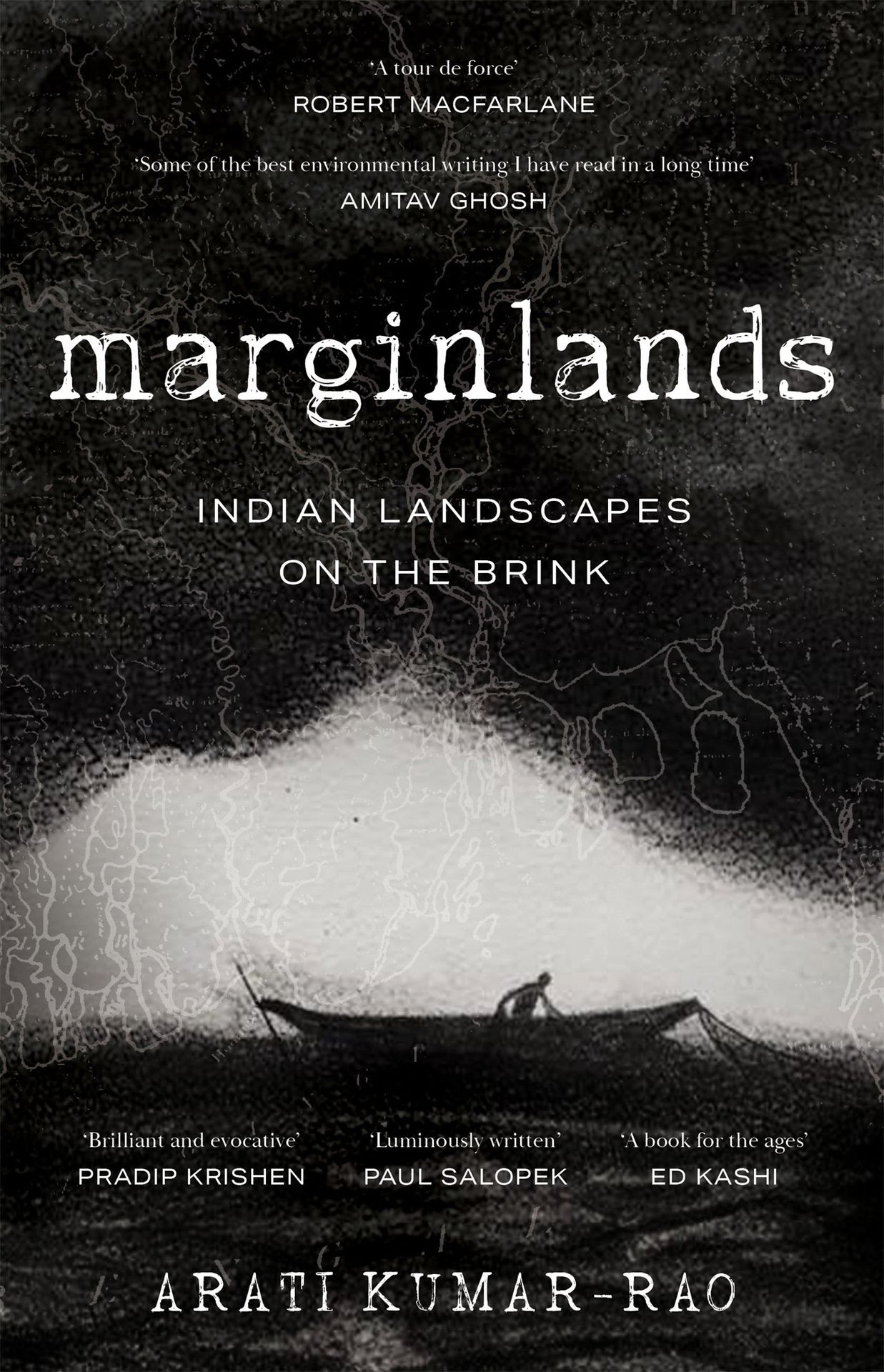Book Review: Marginlands
First published in Sanctuary Asia,
Vol. 43
No. 8,
August 2023
Marginlands: Indian Landscapes on the Brink
By Arati Kumar-Rao
Published by Pan Macmillan India, Hardcover, 256 pages,
Price: Rs. 699

With Marginlands, you hold in your hands a work of evocative long-form reportage complemented by mystical illustrations and beautiful photographs, from parts of the country that rarely feature in public consciousness despite their great wonders or tragedies. Marginlands is independent environmental photographer, writer and artist Arati Kumar-Rao’s first book, though certainly not her first piece of writing. She has been documenting the effects of ecological degradation on humans and their natural environments across South Asia, and often speaks just as eloquently about her work.
The compilation of essays in Marginlands swings wildly, as is justifiably necessitated by the length and breadth of the subcontinent’s people and ecosystems, from Rajasthan’s deep desert landscape in the west to the Ganges delta and Sundarban in the east, continuing upwards to the Himalaya stretched across the north, and into the beating heart of urban India. The opening pages of the book define the conviction of the stories and the storyteller: “For it is my belief that the ancient practice of listening to the land and doing right by it can yet be reclaimed.”
Often, just factually told stories of the environment and people’s lives are enough to move me, but Kumar-Rao’s use of language is fascinating too. She cobbles words to describe the exact picture, such as ‘brousse tigrée’ or ‘tiger bush’ – the desert pattern created by alternating sand and vegetation. It’s not just a book to appreciate human-nature relationships, but to enjoy the language. She writes, “When we lose an evocative lexicon, when we forget the organic words and their import, we lose what Barry Lopez calls ‘the voice of memory over the land’.” Through her book, she stays true to this effort of documenting and deploying language.
Arati Kumar-Rao’s style of approaching stories reminds me of the brilliant war photographer James Nachtwey – his strong belief in visual journalism to effect positive change fueled him to capture images in conflict zones. Kumar-Rao’s commitment to spotlight stories of people affected by decisions taken far away from their reality is reflected in her words, images and illustrations. The black and white tones of her images and art quietly highlight the complexities of the landscape – the ferocity of the water, the calm of the shade of a tree, or the menace of free-ranging dogs waiting to pounce on a Sarus Crane egg. The months, and sometimes years, she spends on each piece translate into truly rich stories, many of which are tied together by the recurring theme of water and its many forms – rivers, deltas, rain, storage structures, the sea. She particularly highlights the importance of hyperlocal knowledge to deal with changing landscapes. As is inherent in good environmental writing and photography, the book imparts the urgency to act.
_1691485308.png)
The Yang Sang Chu, known as the secret river, in Arunachal Pradesh. Photo: Arati Kumar-Rao.
Though the essays in the book are essentially journalistic pieces of work, they are also autobiographical and engaging – for instance, her description of a cup of red tea shared with a shepherd in the Thar desert placed me squarely in her mind and in the moment, imagining the shapes of the clouds that gathered temptingly over the arid land, reflecting on his comment about the wet sand inside a hot sand dune… ‘Jahaan lagaav hota hai, wahaan algaav bhi hota hai’ (Where there is attachment, there is also separation).
The book has the lucidity of fiction and the factual punches of non-fiction, making the travails of the people of Marginlands vividly real. It’s like she has created a time capsule, documenting practices that have been handed down over generations, which help people live in harmony with the land, or of people who have lost and lived with the vagaries of nature and human decisions. For anyone concerned with the environment, the lives of people, and the often convoluted business of coexistence in the times of polycrisis, the book is a must read.
Reviewed by Shatakshi Gawade

.png)

_1691485308.png)